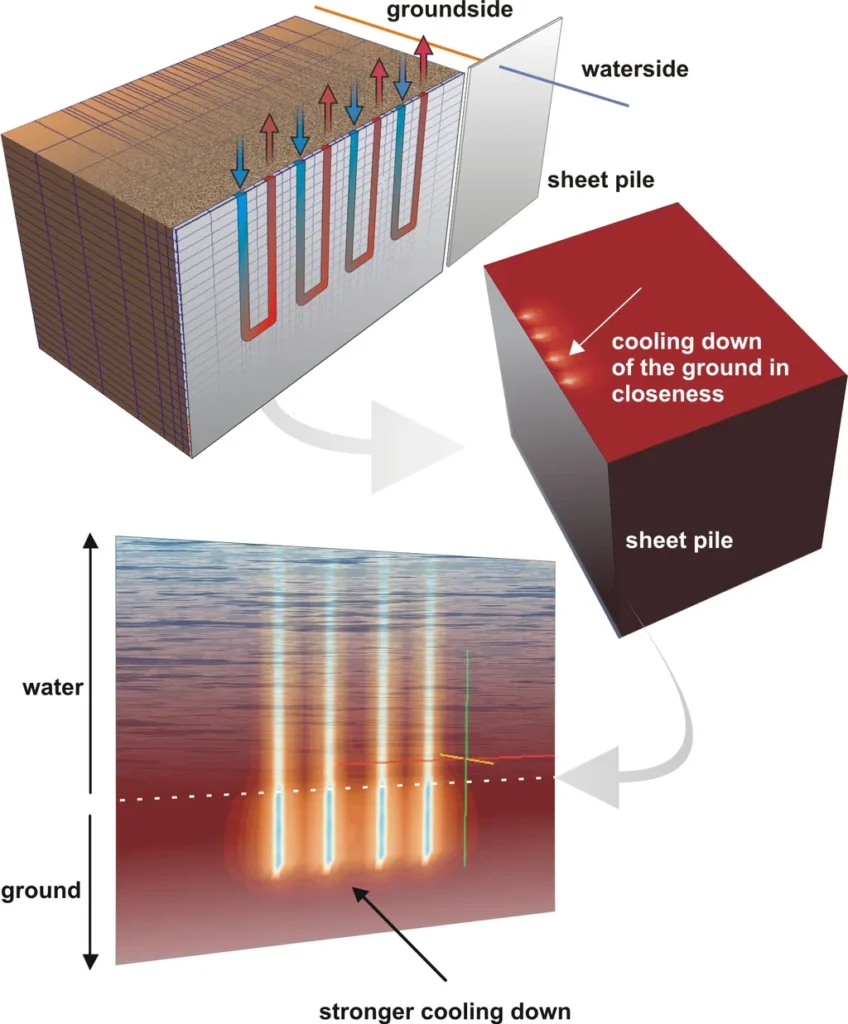In the quest to optimize construction techniques for the energy sector, a groundbreaking study has emerged from the School of Resource & Environment and Safety Engineering at Hunan University of Science and Technology. Led by GE Sha, the research delves into the load-bearing mechanism of inclined pile-sheet retaining walls, a critical component in various construction projects, particularly those related to mining and energy infrastructure.
Traditional pile-sheet retaining walls have long been a staple in construction, but their design and calculation methods have limitations. The introduction of inclined retaining plates has sparked interest due to its potential to enhance load-bearing capacity and stability. However, the mechanism behind this innovation remained unclear—until now.
GE Sha and his team conducted six groups of indoor physical model tests, each with different inclination angles of the retaining plate. Their goal? To unravel the mysteries of how inclination affects the performance of these walls under horizontal loads. The results were enlightening.
“Under horizontal load, larger inclination angles of the retaining plate led to an increase in the bending moment acting on the pile,” explains GE Sha. This finding is crucial for understanding how to optimize the design of retaining walls for maximum stability and efficiency.
The study revealed that the bending moment reached its peak in the middle of the retaining plate and decreased towards both sides, showing a parabolic distribution. This insight could revolutionize the way engineers approach the design and construction of retaining walls, particularly in the energy sector where stability and durability are paramount.
Moreover, the research found that the surface stress on the soil side of the retaining plate first increased and then decreased along the depth of the pile. This stress increased with the rising inclination angle, indicating that the inclination angle significantly affects the load-bearing mechanism of the sheet pile wall.
“Larger inclination angles lead to higher load-bearing capacity of the sheet pile wall,” GE Sha notes. However, it’s not all about going bigger. The straight pile-sheet retaining wall showed a higher bearing capacity than the inclined pile-sheet retaining wall, highlighting the need for a balanced approach in design.
The implications of this research are vast. For the energy sector, understanding the load-bearing mechanism of inclined pile-sheet retaining walls can lead to more efficient and cost-effective construction techniques. This could translate to safer and more stable infrastructure for mining operations, oil and gas facilities, and renewable energy projects.
Published in the Journal of Mining Science, this study opens the door to further exploration and innovation in the field of construction engineering. As the energy sector continues to evolve, so too must the techniques and technologies that support it. GE Sha’s research is a significant step in that direction, offering valuable insights that could shape the future of construction in the energy industry.

